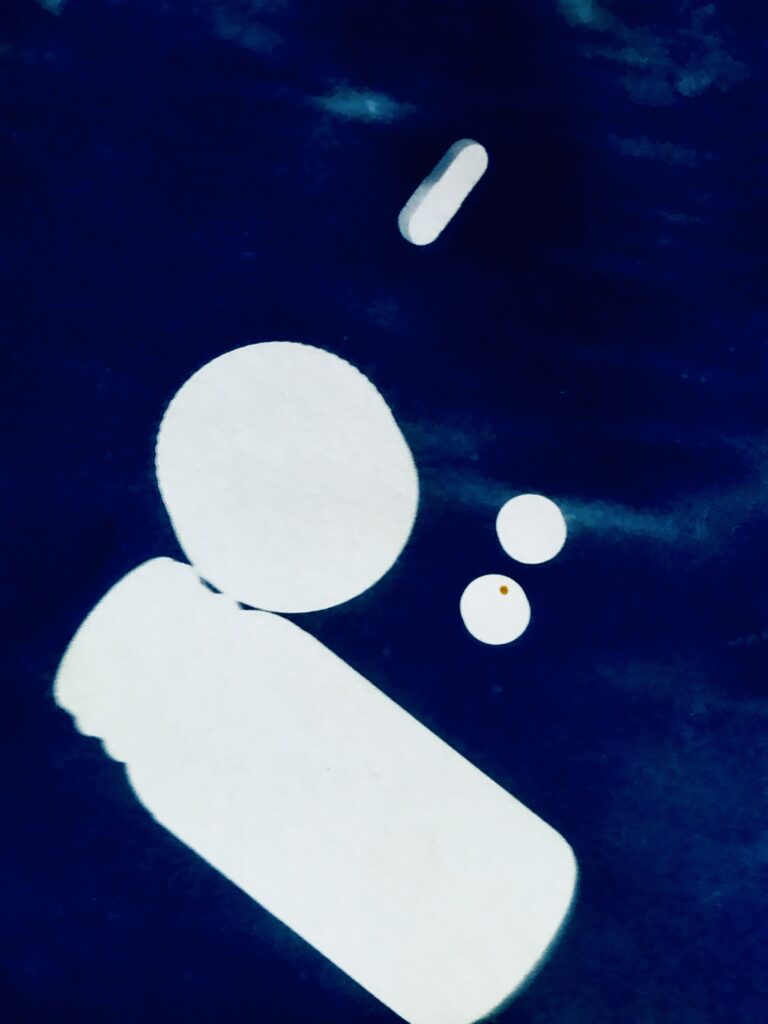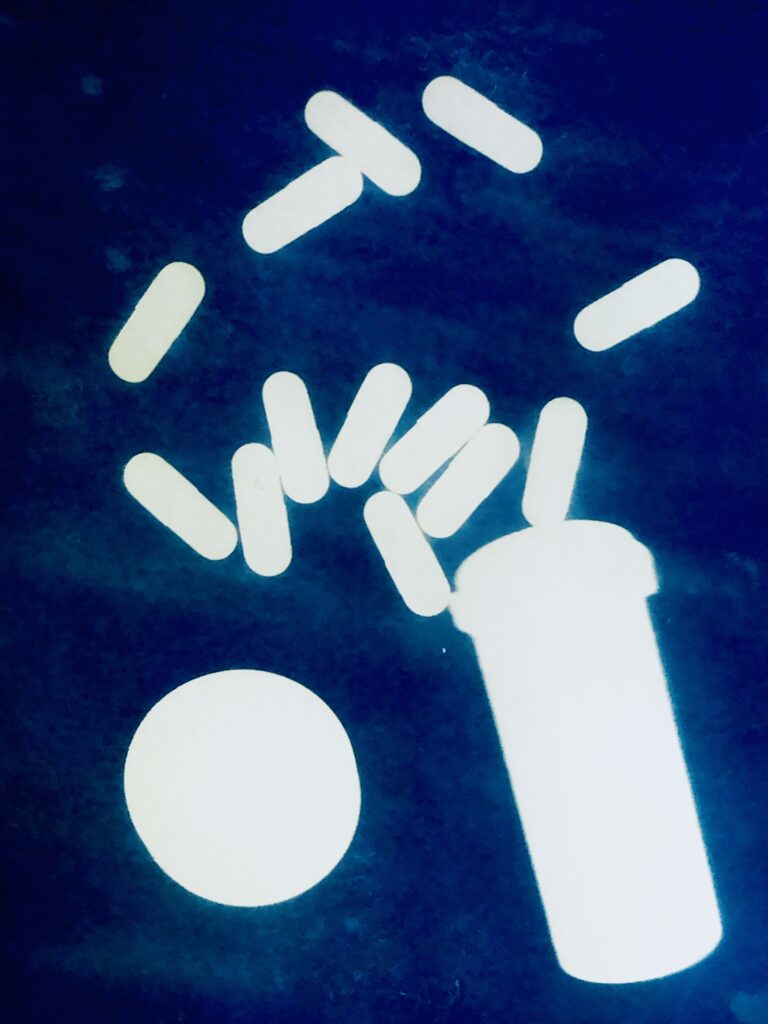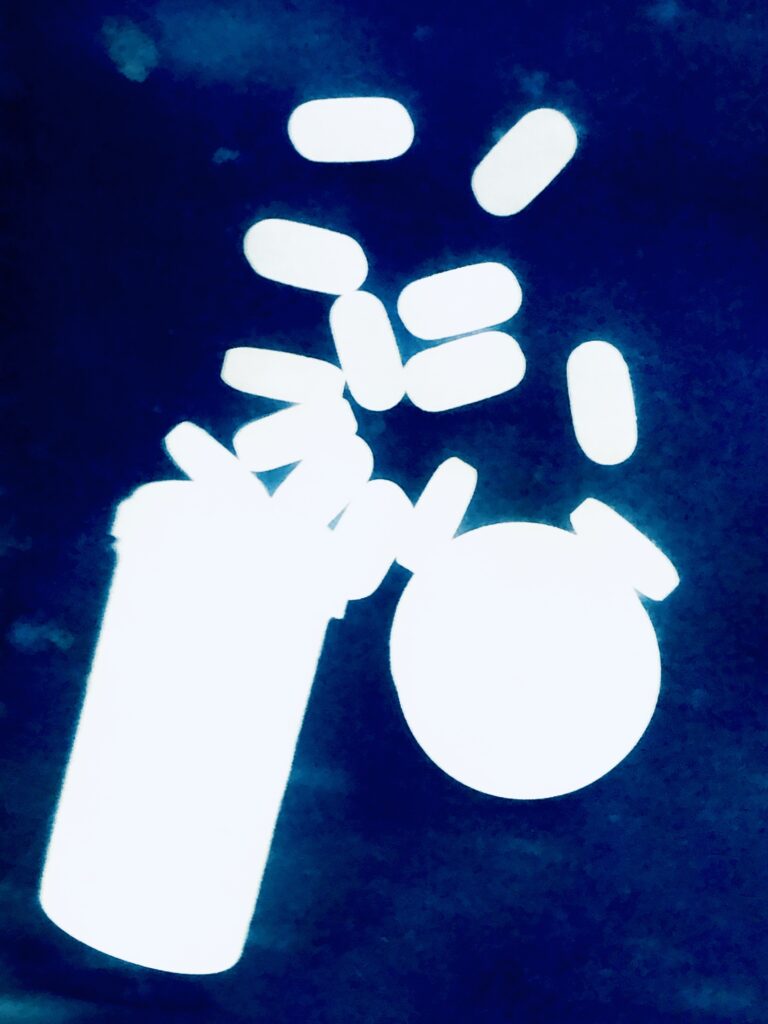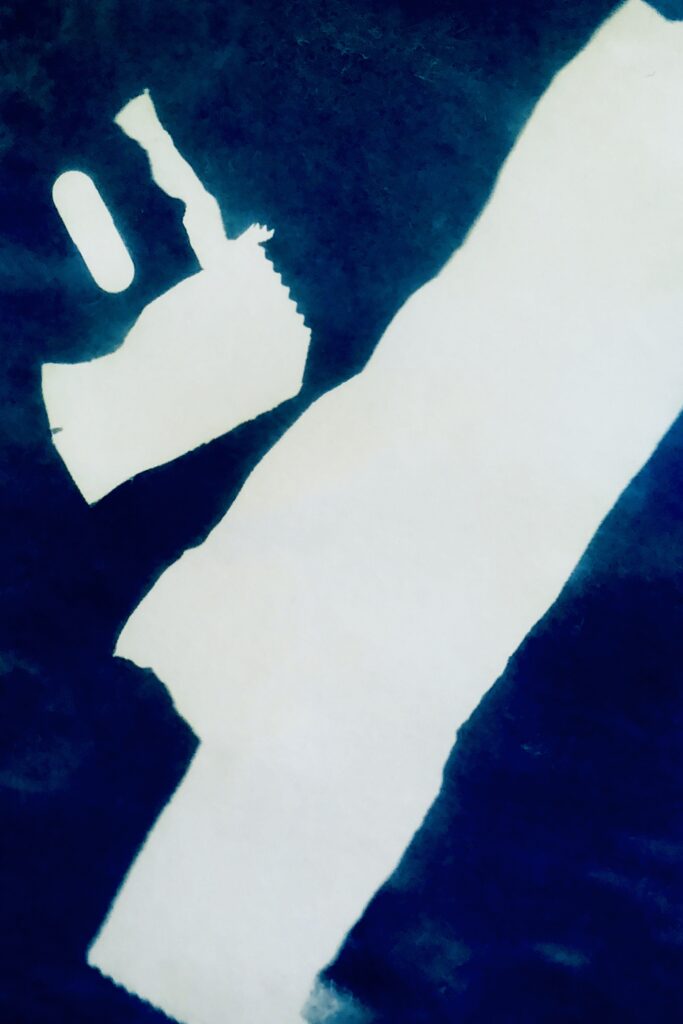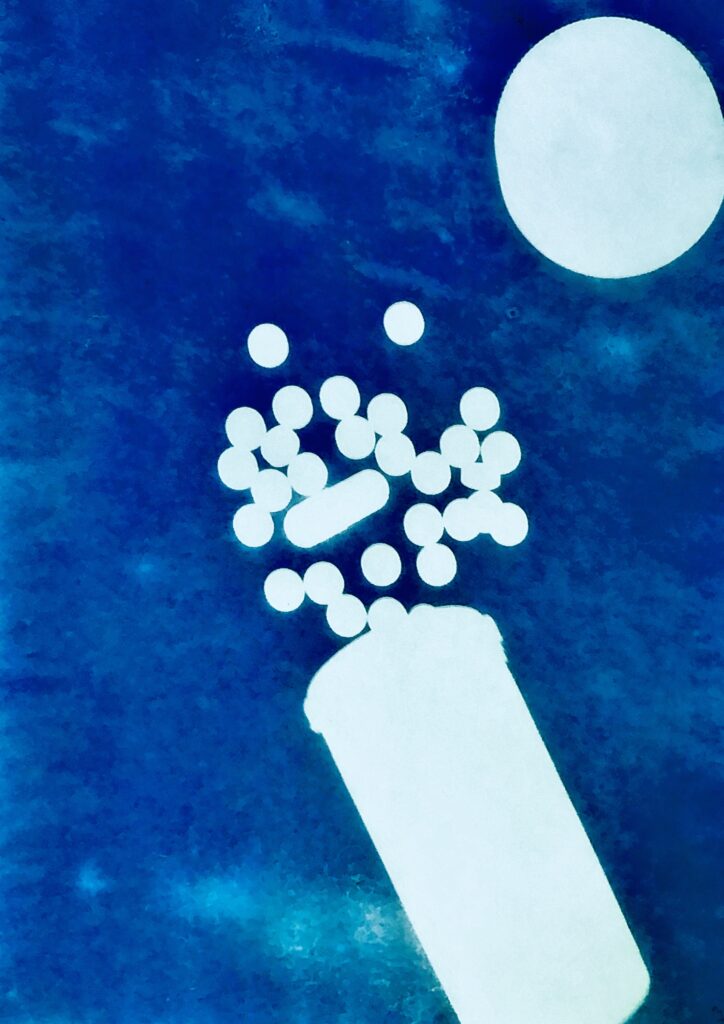Although drastically different from my original proposal for my final project, I instead focused on items more personal and close to me during this quarantined experience we’re all facing. Working with cyanotypes, by far, has been an incredibly enjoyable experience, which is why I decided to use this alternative process for my final project. I consider cyanotypes, when used in its original purpose, as an archival tool. I looked at the work of Anna Atkins, who’s known for her book Photographs of British Algae: Cyanotype Impressions (1843-53). This book is known as the first book to be photographically printed and illustrated. Although Atkins originally did not intend for her book to be used for aesthetic purposes, she did understand that there was a visual appeal of these “flowers of the sea.” Channeling Atkins’ archival creativity, I decided to do the same with the medicine I found scattered in different parts of my home.
Growing up, I was a very sickly child, and to this day, by no surprise, I still am. However, the presence of medicine and pills was something I became used to. In 2016, my mother was rushed to the hospital. She had an emergency Laparoscopic (keyhole) cholecystectomy, also known as gallbladder removal. Though it was a shocking experience, my mother brought home more pills to add to our little collection of medicine. In 2019, I suffered chronic stomach pain, nausea, and discomfort, oftentimes resulting in a lot of early mornings by the toilet. My diet changed, and so did my medicinal consumption. I wanted to use this alternative process to document the different types of pills my parents and I consume on a daily basis because of our health conditions.

